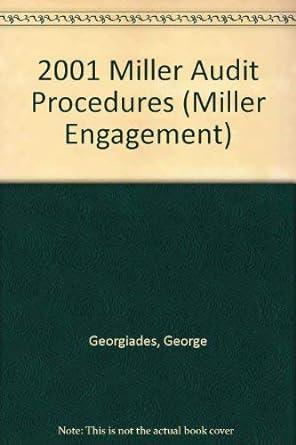Question
You have been provided with accounting research tools. Use them to answer the following multiple choice questions. After you make your choice, tell me what
You have been provided with accounting research tools. Use them to answer the following multiple choice questions. After you make your choice, tell me what theory you are basing your answer on, or what part of the codification applies to the question. As you may have guessed, this is an open book quiz. . [1] GAAP applying to earnings per share require A. Restatement of EPS data of a prior period if the earnings of the prior period have been restated. B. Dual presentation of BEPS and DEPS for the current period only. C. The presentation of BEPS but not DEPS for the results of operations of prior periods presented in the financial statements. D. The disclosure of the effect of a restatement of prior-period earnings in the prior period. [2] EPS amounts must be disclosed on the face of the income statement for Income from Results of Continuing Discontinued Operations Operations A. B. C. D. Yes Yes No No Yes No Yes No [3] Wood Co.s dividends on noncumulative preferred stock have been declared but not paid. Wood has not declared or paid dividends on its cumulative preferred stock in the current or the prior year and has reported a net loss in the current year. For the purpose of computing basic earnings per share, how should the income available to common stockholders be calculated? A. The current-year dividends and the dividends in arrears on the cumulative preferred stock should be added to the net loss, but the dividends on the noncumulative preferred stock should not be included in the calculation. B. The dividends on the noncumulative preferred stock should be added to the net loss, but the current-year dividends and the dividends in arrears on the cumulative preferred stock should not be included in the calculation. C. The dividends on the noncumulative preferred stock and the current-year dividends on the cumulative preferred stock should be added to the net loss. D. Neither the dividends on the noncumulative preferred stock nor the current-year dividends and the dividends in arrears on cumulative preferred stock should be included in the calculation. [Fact Pattern #1] Smith Corporation had net income for the year of $101,504 and a simple capital structure consisting of the following common shares outstanding: Months Outstanding Number of Shares January - February 24,000 March - June 29,400 July - November 36,000 December 35,040 Total 124,440 [4] ( Refers to Fact Pattern 1 ) Also assume that Smith Corporation issued a 20% stock dividend on August 1. This distribution is not reflected in the data above. Accordingly, BEPS (rounded to the nearest cent) equals A. $2.41 B. $2.67 C. $2.72 D. $2.88 [5] In determining diluted earnings per share (DEPS), A. Potential common stock with a dilutive effect on EPS is not considered in the computation of shares outstanding. B. The denominator is adjusted for the assumed exercise of outstanding stock options during the period if the exercise would have a dilutive effect on EPS. C. Under the treasury stock method, DEPS data are computed as if the options and warrants were exercised at the end of the period and the funds obtained were used to purchase common stock at the average market price in effect for the period. D. Dividends on preferred stock convertible to common stock are subtracted from net income in the numerator. [6] The treasury stock method of computing diluted earnings per share will increase the number of shares outstanding whenever the exercise price of an option or a warrant is A. Below the market price of the common stock. B. Greater than the market price of the common stock. C. Below the par value of the common stock. D. Equal to the market price of the common stock. [7] On June 1, Laural Corporation issued convertible debt securities that were properly classified as potential common shares. When computing year-end earnings per share at December 31, Laural Corporation would include the convertible securities in the computation of diluted earnings per share (DEPS) only if they A. Have been converted. B. Are antidilutive. C. Are dilutive. D. Have been exercised.
Step by Step Solution
There are 3 Steps involved in it
Step: 1

Get Instant Access to Expert-Tailored Solutions
See step-by-step solutions with expert insights and AI powered tools for academic success
Step: 2

Step: 3

Ace Your Homework with AI
Get the answers you need in no time with our AI-driven, step-by-step assistance
Get Started


